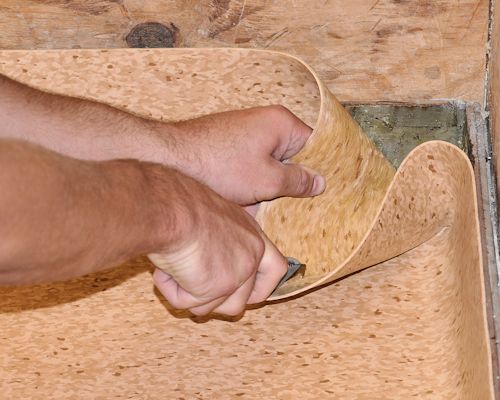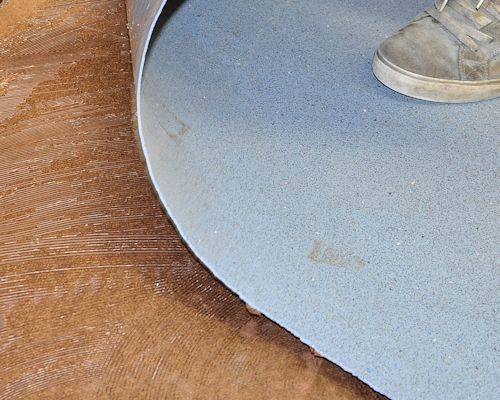Problems with adhesives
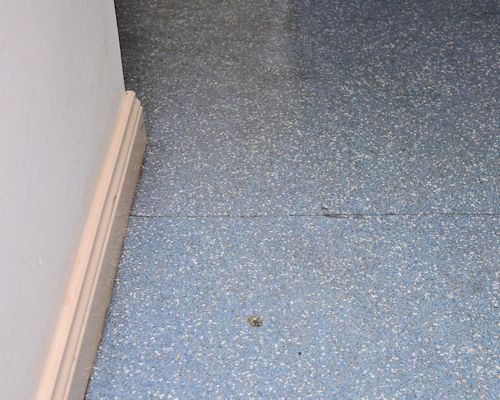 Audio for slide 1 (mp3 |6|KB)
Audio for slide 1 (mp3 |6|KB)
In practice, they often need replacement before they reach that stage because the adhesive has either failed or caused discolouration in the floor surface.
Below are some of the problems relating to adhesives and the technical terms used to describe the issues.

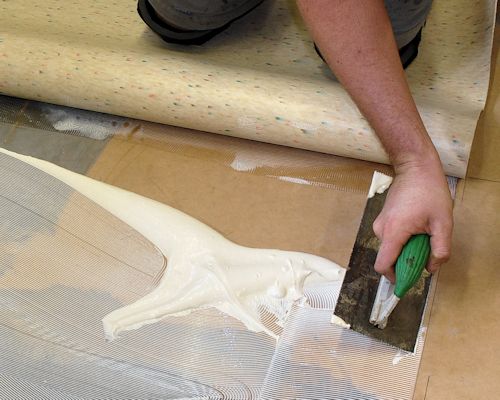 Audio for slide 3 (mp3 |6|KB)
Audio for slide 3 (mp3 |6|KB)
This tends to happen when multi-purpose adhesives are used with vinyl-backed sheet floors.
The best way to avoid plasticiser migration is to only use adhesives that have been specifically recommended by the flooring manufacturer. This ensures that the two products are compatible with each other.

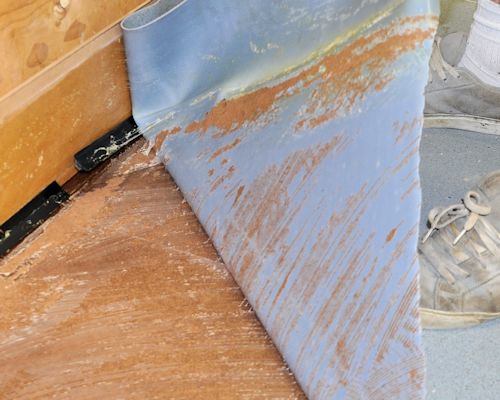 Audio for slide 5 (mp3 |6|KB)
Audio for slide 5 (mp3 |6|KB)
That is, the floor covering has been placed on top of the adhesive after it has set.
The problem can also be due to using a worn or incorrectly-sized notched trowel, resulting in poor transfer of adhesive to the floor covering.
In other cases, it could simply be because the wrong adhesive has been used.

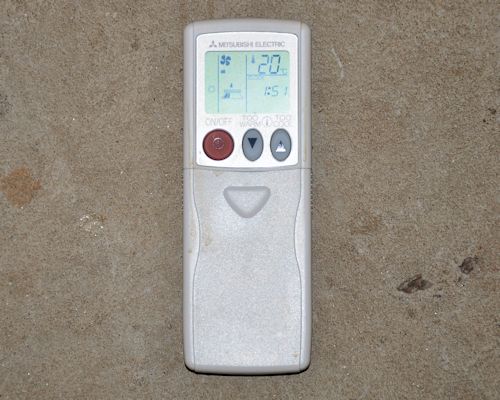 Audio for slide 6 (mp3 |6|KB)
Audio for slide 6 (mp3 |6|KB)
Temperature extremes
Adhesives should only be used when the room and subfloor temperatures are within the range specified by the manufacturer.
High temperatures can cause the solvent to evaporate too quickly in solvent-based adhesives, resulting in thickening and early setting.
Low temperatures can result in poor workability and heavy spread.
In the case of emulsion-type adhesives, low temperatures can cause the components to break down and separate.

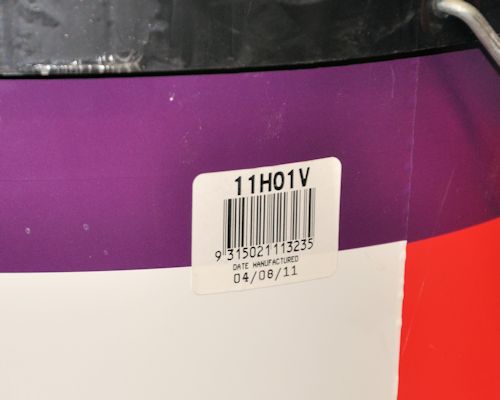 Audio for slide 7 (mp3 |6|KB)
Audio for slide 7 (mp3 |6|KB)
Shelf life and pot life
Some adhesives have a 'use-by' date stamped on the container or drum, indicating how long the product can be kept on the shelf.
Once this shelf life has expired, you can no longer guarantee that the product will work exactly as you expect it to, because the components might start to deteriorate.
The photo at left shows a sticker with the date of manufacture printed on it.
Although this isn't a use-by date, it still lets you see how old the product is. You should always try to rotate the stock on the shelf, using the older stock first.

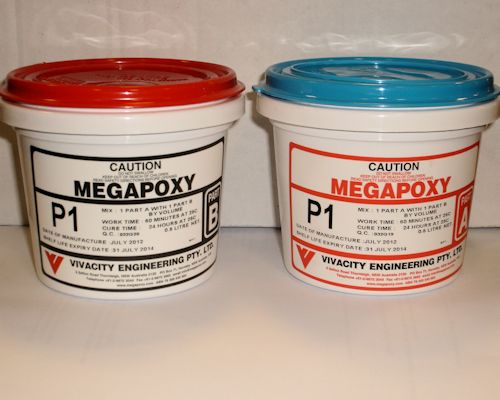 Audio for slide 8 (mp3 |6|KB)
Audio for slide 8 (mp3 |6|KB)
It's similar to 'working open time', which we discussed earlier in this section.
Don't forget that the pot life shown on the container will refer to a particular temperature range, such as 20-23° C.
If the temperature is hotter, the pot life will be reduced. If it's colder, the pot life will be increased.

 Audio for slide 9 (mp3 |6|KB)
Audio for slide 9 (mp3 |6|KB)
Diagnosing faults
The link below will take you to a table showing some of the typical problems you're likely to see in a floor when the adhesive fails.
It is adapted from the 'Adhesives fault diagnosis' table produced by Forbo Flooring Systems in their publication: Forbo Floorcoverings Installation Guide.
Note that the descriptions of problems and their causes are only generalisations. In practice, there might be other reasons why a particular floor has failed.


Learning activity
Audio 10 (mp3 |6|KB)Have another look at the 'Adhesive problems and causes' table in the link above.
Have you seen any examples of these problems, either in your own work or in another floor you've inspected?
Describe one or two of the examples you've seen, including the type of flooring involved and other aspects of the job that were relevant to the problem.

 Go to Heat welding equipment
Go to Heat welding equipment